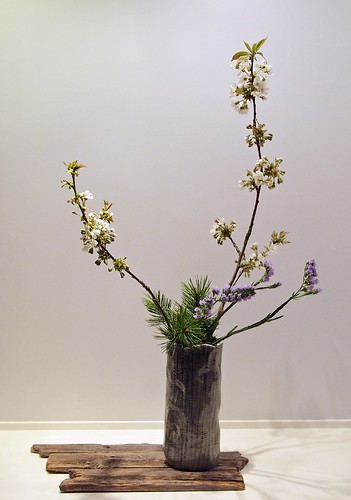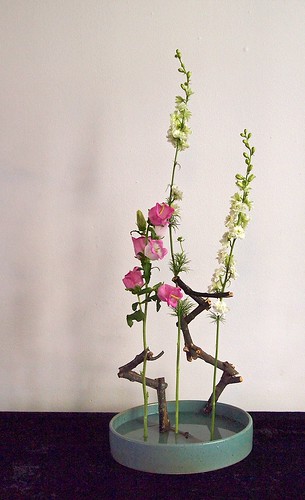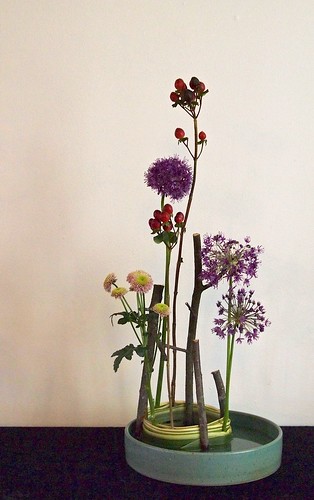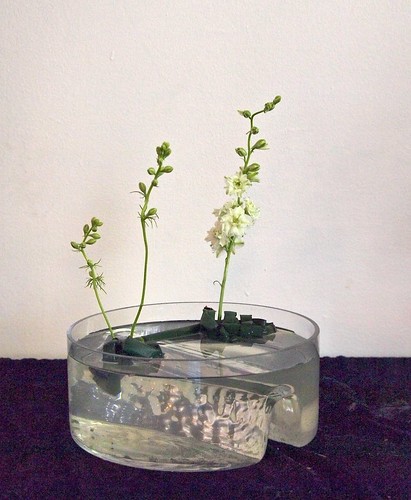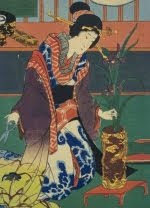Nageire, curved lines, dried and fresh materials.
Midelino sticks, jute fibre textile, Carnations.
Midelino sticks, jute fibre textile, Carnations.
I'm following up my last blog post, about arrangements to be viewed from all angels, with a somewhat similar design using dried materials instead of fresh branches.
This is a smaller sized arrangement with a more abstract Sogetsu ikebana look. My teacher suggested trying out working with Midelino sticks and pieces of fibre textile in a design with curved lines, and this was the result.
Midelino sticks is a flower design product made from rattan. It is without glaze and is very flexible, so it can be bent into many different shapes. If you cut the end pointed and use a sharp object to make a small hole somewhere on the stick you can fix the end of the stick quite firmly in this hole.
This is a smaller sized arrangement with a more abstract Sogetsu ikebana look. My teacher suggested trying out working with Midelino sticks and pieces of fibre textile in a design with curved lines, and this was the result.
Midelino sticks is a flower design product made from rattan. It is without glaze and is very flexible, so it can be bent into many different shapes. If you cut the end pointed and use a sharp object to make a small hole somewhere on the stick you can fix the end of the stick quite firmly in this hole.










